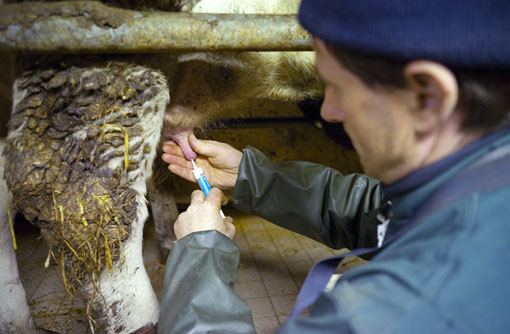Get set to reduce your antibiotic use

Antibiotic resistance has been hitting the headlines more and more. The reason is the belief that use of antibiotics on farm is increasing antibiotic resistance in humans with the health implications that this brings, plus the fact that there are very few antibiotics on the horizon for human or animal use.
Change is being driven by governments, regulatory agencies and consumer pressure such as supermarkets. In 2010, the Dutch Ministry of Agriculture announced they wanted a 20% reduction in the antibiotics used on farm by 2011 and a 50% reduction by 2013. They wanted to reduce the use of ALL third and fourth generation cephalosporins, fluoroquinolones and any other antibiotics used for treating multi-resistant human infections. In Holland all treatments are recorded in a national database so it’s easy to see what’s happening on a farm-by-farm basis and what specific antibiotics are being used.
Dutch livestock farmers are obliged to implement and adhere to a herd health plan that includes a herd level treatment protocol that has to be reviewed on an annual basis by their vet. There is a clear onus on the farmers and veterinarians. The US is now restricting “off label use” of third generation cephalosporins. Other countries are doing the same.
In Scandanavia and other Nordic countries, a vet has to examine every animal prior to any antibiotic treatment. This is expensive and so these countries have been focusing on reducing disease for years so the need for treatments are minimised.
Our aim is to reduce antibiotic use by preventing disease through improved management and use of effective vaccines where appropriate. Where antibiotic treatments are required, we should be using the correct antibiotic for the correct treatment starting with the most basic antibiotic using the correct dose rates, route of administration for the recommended period of time as advised by your vet. The most potent antibiotics should be used where there is a lack of response to treatment and not as a first course of treatment.
The use of “blanket” medicines is hard to justify. Take antibiotic dry cow therapy as an example. This was introduced back in the late 1960s to reduce cell counts and prevent new infections in the dry period. National herd cell counts have fallen from 600,000 down to about 225,000. Teats can now be sealed during the dry period to stop new infections. There is no justification for using antibiotic dry cow therapy on cows which are free from infection at the end of lactation. Dry cow therapy should only be used where there is a proven need based on individual cow cell count data and clinical mastitis records.
There are some antibiotics which are licensed for the treatment and prevention of disease. Antibiotics should be used for treatment only. Some newer antibiotics are widely used due to attractive properties, such as a short or zero withdrawal period, but this does not mean that these are the best treatments. These might have significant financial benefits to the farmer but this does not necessarily constitute best practice.
So what do we need to do?
Firstly, a complete review of antibiotic use on every farm is the starting point. Tesco is already doing this on its direct supply milk producers. What are the common diseases treated and how can their incidence be reduced? Individual treatment regimes need to be reviewed to cover the specific antibiotics that are used, dose rates, frequency and duration of treatment. Written treatment protocols should always be given so there is no doubt about what has to be administered and when.
There will be significant changes to antibiotic use over the next few years. The onus for responsible use has to be with the farmer and veterinary surgeon and they will have to be able prove due diligence and justification for any treatments that are administered.
